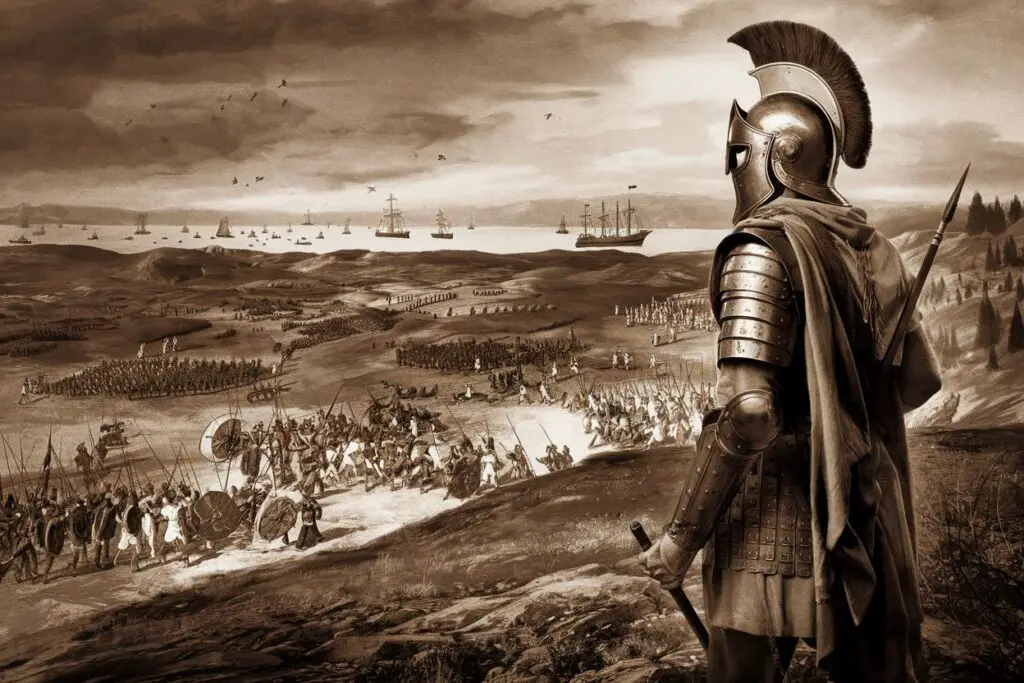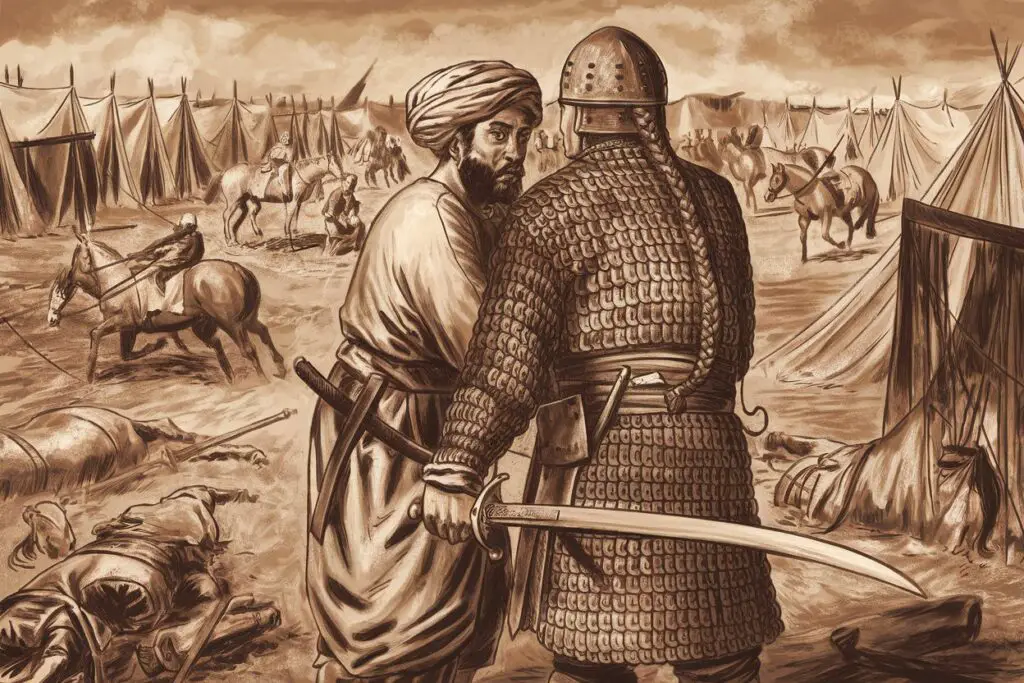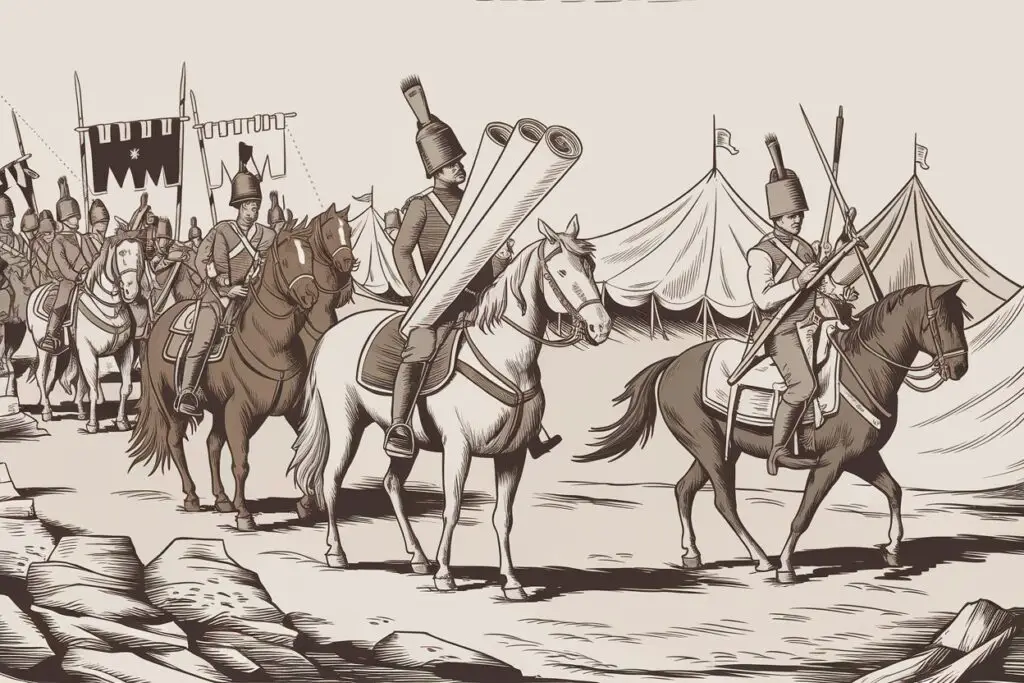1.The Battle of Plataea—The Final Blow to the Persian Invasion of Greece
By 479 BC, the Greco-Persian Wars had reached a decisive moment. The Persian Empire, under King Xerxes I, had suffered a devastating naval defeat at Salamis the previous year, forcing Xerxes to withdraw most of his army back to Asia. However, he left behind a formidable force under General Mardonius to complete the conquest of Greece. The Greek city-states, led by Sparta and Athens, recognized that one final battle could determine the fate of their homeland. What followed was the Battle of Plataea—a confrontation that would not only end the Persian invasion but also shape the future of Western civilization.

The battle took place near the city of Plataea in Boeotia, where the Greek alliance, composed of hoplite infantry from Sparta, Athens, Corinth, and other city-states, faced off against the Persian army. For over ten days, both sides hesitated to engage in large-scale combat, with the Greeks strategically avoiding the open plains where Persian cavalry excelled. When a disruption in Greek supply lines forced them to reposition, Mardonius misinterpreted their movement as a full retreat. Seizing the opportunity, he ordered an attack—a fatal miscalculation. The Greek forces, led by the Spartan commander Pausanias, quickly regrouped and launched a counteroffensive. The heavily armored Greek hoplites proved superior in close combat, overwhelming the lighter Persian infantry. Mardonius was killed in the chaos, and the Persian army, now leaderless, collapsed.
The victory at Plataea was more than just a military triumph; it marked the end of the Persian invasion and the beginning of Greek ascendance in the Mediterranean. On the same day, the Greeks also won the Battle of Mycale, destroying the remnants of the Persian fleet and ensuring that Persia would never again threaten Greece in the same way. The unity displayed by the Greek city-states at Plataea reinforced their confidence in their military strength and political independence. Over the next century, this newfound self-assurance would lead to the rise of the Athenian Golden Age, the flourishing of democracy, and the cultural achievements that would lay the foundation for Western thought.
Had the Persians won at Plataea, the course of history could have been drastically different. Greece might have fallen under Persian rule, stifling the development of democracy and classical philosophy. Instead, the Greek victory ensured that their ideals—political freedom, intellectual inquiry, and artistic expression—would continue to thrive. The Battle of Plataea was not just the final blow to the Persian invasion; it was a defining moment that helped shape the trajectory of Western civilization.
2.The Battle of Ain Jalut—When the Mamluks Halted the Mongol Advance
By the mid-13th century, the Mongol Empire had carved a path of destruction across Asia and the Middle East, toppling empires and razing cities with brutal efficiency. Their conquest of Baghdad in 1258 had shattered the Abbasid Caliphate, and their forces seemed unstoppable. Yet, in 1260, at the Battle of Ain Jalut, the Mamluks of Egypt achieved what no other army had done before: they decisively defeated a Mongol force, halting their westward expansion.

The Mongol army, led by General Kitbuqa, faced off against the Mamluks under Sultan Qutuz and his skilled commander, Baybars. The Mamluks, themselves former slave soldiers, were expert horsemen and tacticians. Using a feigned retreat—a favorite Mongol strategy against them—the Mamluks lured Kitbuqa’s forces into a trap. As the Mongols pursued what they believed to be a fleeing enemy, hidden Mamluk troops emerged from the surrounding hills, cutting them off. In the ensuing clash, Kitbuqa was captured and executed, and his army was annihilated.
This battle was more than just a military victory. It shattered the myth of Mongol invincibility and safeguarded the Islamic world from further Mongol incursions. Had the Mongols triumphed, Egypt and North Africa might have fallen under their rule, altering the course of history. Instead, the Mamluks cemented their dominance in the region, and the Mongols never again mounted a serious offensive into the Middle East.
3.The Battle of Tours—How Charles Martel Stopped the Moors in Europe
In 732 AD, a battle unfolded in the heart of modern-day France that would shape the course of European history. Known as the Battle of Tours (or Poitiers), this clash pitted the Frankish forces under Charles Martel against the advancing Umayyad army led by Abd al-Rahman al-Ghafiqi. At the time, the Umayyad Caliphate had rapidly expanded its influence across North Africa and the Iberian Peninsula, and its armies were now pressing into the heart of Western Europe. Had they succeeded, the cultural and religious landscape of Europe might have looked drastically different.
Martel, a brilliant strategist, understood the stakes. Instead of engaging in open battle on unfavorable terrain, he positioned his army on high ground, forcing the Umayyad cavalry to charge uphill. His soldiers, primarily heavy infantry, stood in a tight phalanx formation, creating an impenetrable wall against the swift but lightly armored Muslim horsemen. After hours of fierce combat, the Umayyad army faltered when rumors spread that their camp was being plundered. In the chaos, Abd al-Rahman was killed, sending his forces into retreat. The Frankish victory was decisive—Islamic expansion into Western Europe was halted, and Martel’s triumph laid the foundation for the Carolingian Empire, eventually leading to the reign of Charlemagne.
Historians debate whether the battle truly “saved” Europe from Islamic rule, but its significance is undeniable. It marked the end of large-scale Muslim invasions into Frankish territory and reinforced the power of the emerging Carolingian dynasty. Charles Martel’s victory earned him the title “The Hammer,” a fitting name for a leader who struck a blow that would echo through the centuries.
4.The Battle of Cajamarca—A Handful of Conquistadors vs. the Inca Empire
On November 16, 1532, one of the most lopsided military encounters in history unfolded in the city of Cajamarca, Peru. Francisco Pizarro, leading a mere 168 Spanish conquistadors, faced the Inca Emperor Atahualpa, who arrived with an entourage of thousands—estimates range from 6,000 to 80,000. Yet, in a matter of hours, the Spanish decisively defeated the mighty Inca force, capturing Atahualpa and sealing the fate of the empire. How did such a small force achieve this? The answer lies in a mix of deception, superior weaponry, and a profound cultural misunderstanding.
Pizarro lured Atahualpa into the city under the guise of diplomacy. As the Inca ruler and his unarmed nobles entered the main square, the Spanish sprung their ambush. Armed with steel swords, firearms, and mounted cavalry—technologies unknown to the Incas—the conquistadors unleashed chaos. The Inca warriors, despite their overwhelming numbers, were caught off guard and leaderless. Thousands were slaughtered, while the Spanish suffered virtually no casualties. The most devastating blow, however, was Atahualpa’s capture. The Incas viewed their emperor as divine; his sudden imprisonment shattered their morale and disrupted their chain of command.
Atahualpa, desperate to secure his freedom, offered a ransom that would become the largest known in history—a room filled with gold and twice as much silver. The Spanish accepted the treasure but, fearing his influence, executed him in July 1533. With their leader gone and internal strife mounting, the Inca Empire crumbled, allowing the Spanish to seize control of vast territories. The Battle of Cajamarca wasn’t just a military victory—it was a turning point that led to the collapse of one of the greatest civilizations in the Americas.
5.The Battle of Talas—How Paper-Making Spread from China to the West
In the grand sweep of history, few battles have had such an unexpected yet profound impact as the Battle of Talas in 751 CE. Fought between the Tang Dynasty of China and the Abbasid Caliphate, this clash wasn’t just about military supremacy in Central Asia—it would inadvertently change the course of knowledge dissemination across the world. The battle took place near the Talas River, in what is now modern-day Kyrgyzstan, as both empires vied for control over the lucrative Silk Road trade routes. What makes this battle remarkable isn’t just the Abbasid victory, but what followed: the transfer of paper-making technology from China to the Islamic world.

Traditionally, historians believed that Chinese prisoners of war captured during the battle introduced paper-making techniques to the Abbasids. Before this, paper was a prized Chinese secret, developed as early as 105 CE by Cai Lun, a court official of the Han Dynasty. The captured artisans were taken to Samarkand, where the first known paper mill outside of China was established. From there, paper-making spread westward to Baghdad, Damascus, Cairo, and eventually into Europe through Islamic Spain by the 12th century. This innovation revolutionized communication, making books, scientific texts, and bureaucratic records more accessible than ever before.
While some scholars argue that paper-making may have already existed in Central Asia before the battle, the Abbasids undoubtedly accelerated its spread. By the time paper reached medieval Europe, it would fuel the Renaissance, the Scientific Revolution, and the printing press revolution. In a way, the Battle of Talas didn’t just decide the fate of an army—it set the stage for the modern information age.
6.The Battle of Karánsebes—The Hilarious Friendly-Fire Disaster That Saved Austria
The Battle of Karánsebes is one of history’s most bizarre military blunders—a chaotic episode in which an army defeated itself without a single enemy soldier in sight. This strange event took place on the night of September 21-22, 1788, during the Austro-Turkish War, near the town of Karánsebes (modern-day Caransebeș, Romania). The Austrian army, a massive force of around 100,000 men, was advancing toward Ottoman territory. However, the army was a linguistic patchwork, composed of soldiers from various ethnic backgrounds, including Austrians, Hungarians, Romanians, Serbs, Croats, and Italians. This lack of a common language would prove disastrous.
The confusion began when a group of Austrian hussars crossed the Timiș River to scout for Ottoman forces but instead found local merchants selling schnapps. The cavalrymen eagerly bought the alcohol and began drinking. When infantry troops arrived and demanded their share, tensions flared. A drunken argument escalated into gunfire, and in the darkness, someone shouted “Turcii! Turcii!” (“Turks! Turks!”), triggering widespread panic. German-speaking officers attempted to restore order by yelling “Halt!“—but non-German-speaking soldiers misheard it as “Allah!,” convincing them that the Ottomans were attacking.
In the ensuing chaos, Austrian units fired upon each other, cavalry charged through their own infantry, and artillery crews shelled their own positions. The carnage continued until the entire army scattered in a blind retreat. By morning, between 150 and 1,200 Austrian soldiers lay dead or wounded—all without any Ottoman intervention. When the actual Ottoman forces arrived two days later, they found the battlefield littered with abandoned weapons and demoralized survivors, making it easy for them to capture Karánsebes.
Though often exaggerated in retellings, the Battle of Karánsebes underscores the dangers of miscommunication in a multinational army. Ironically, some historians argue that this self-inflicted disaster may have delayed a more organized Ottoman offensive, preventing a direct assault on Vienna. Whether or not it truly “saved Austria,” it remains a cautionary tale of how poor discipline, alcohol, and linguistic confusion can turn an army against itself.







